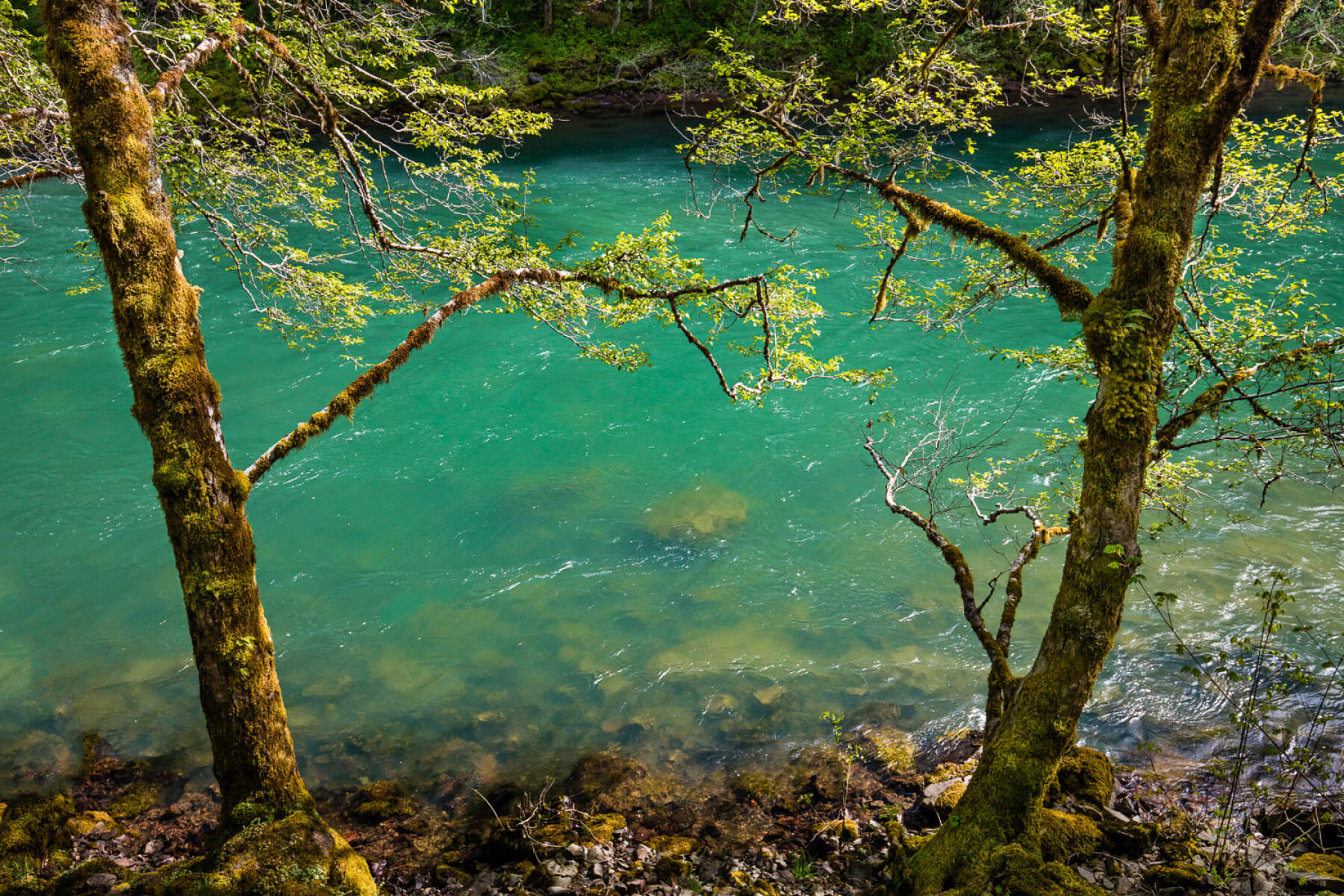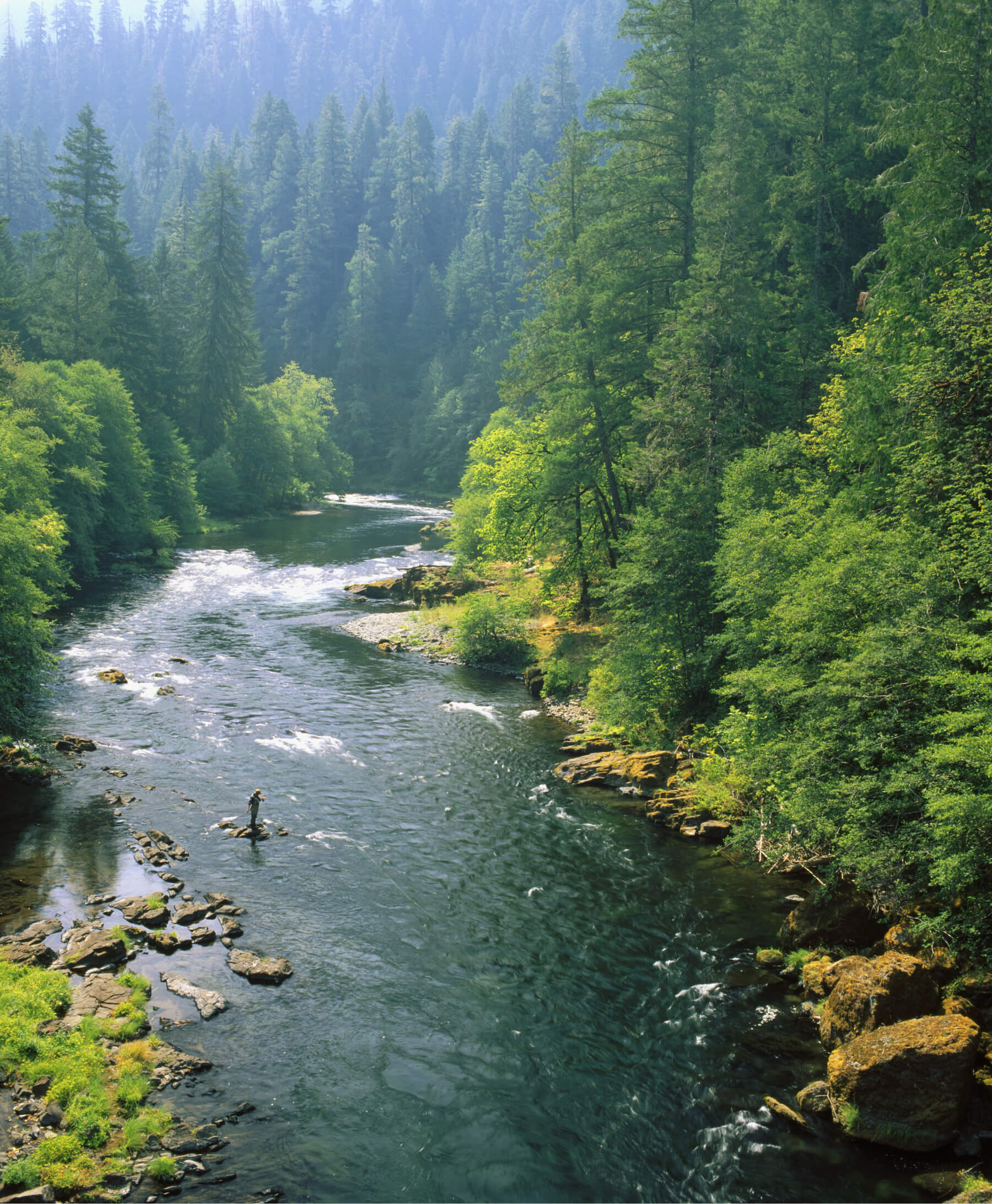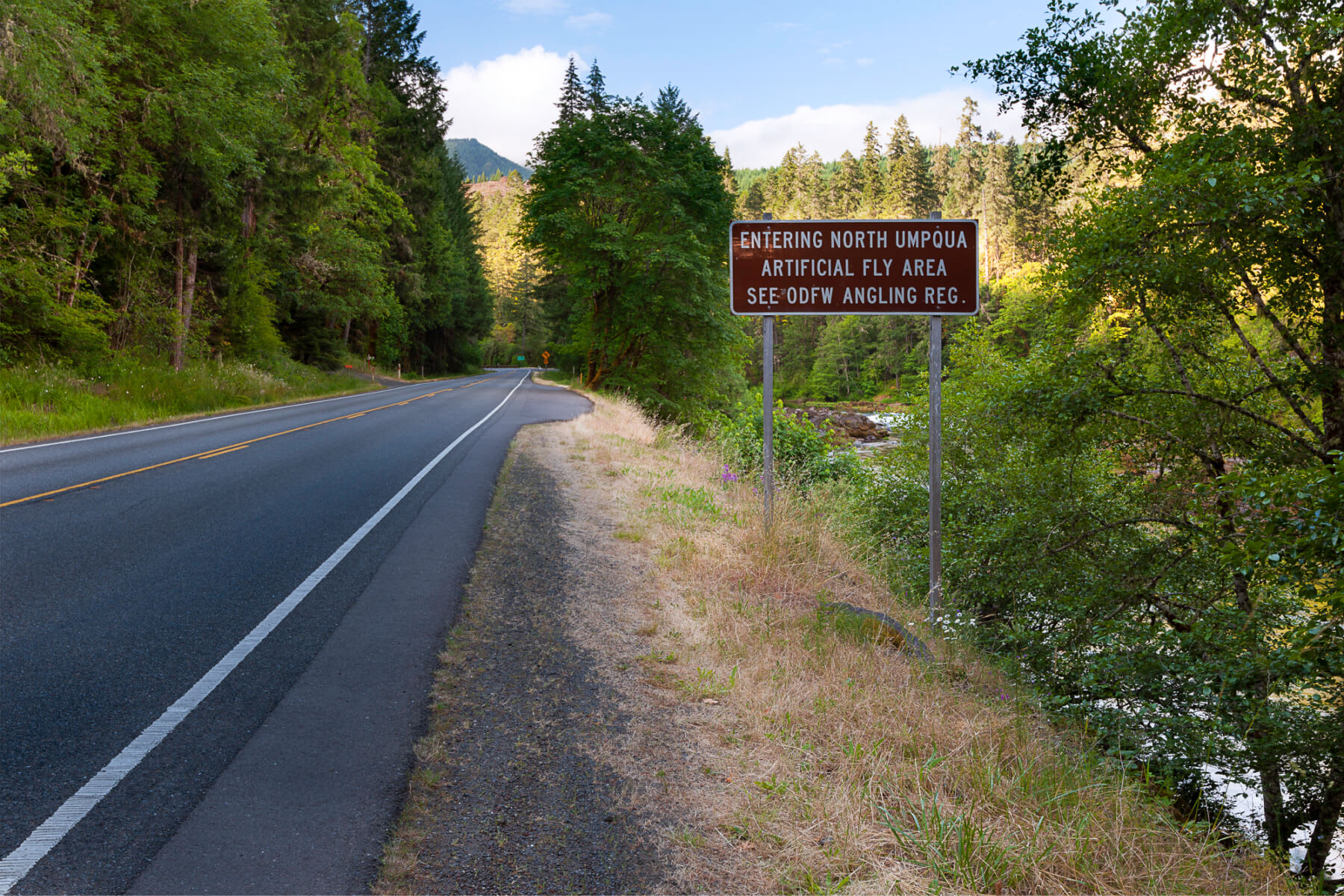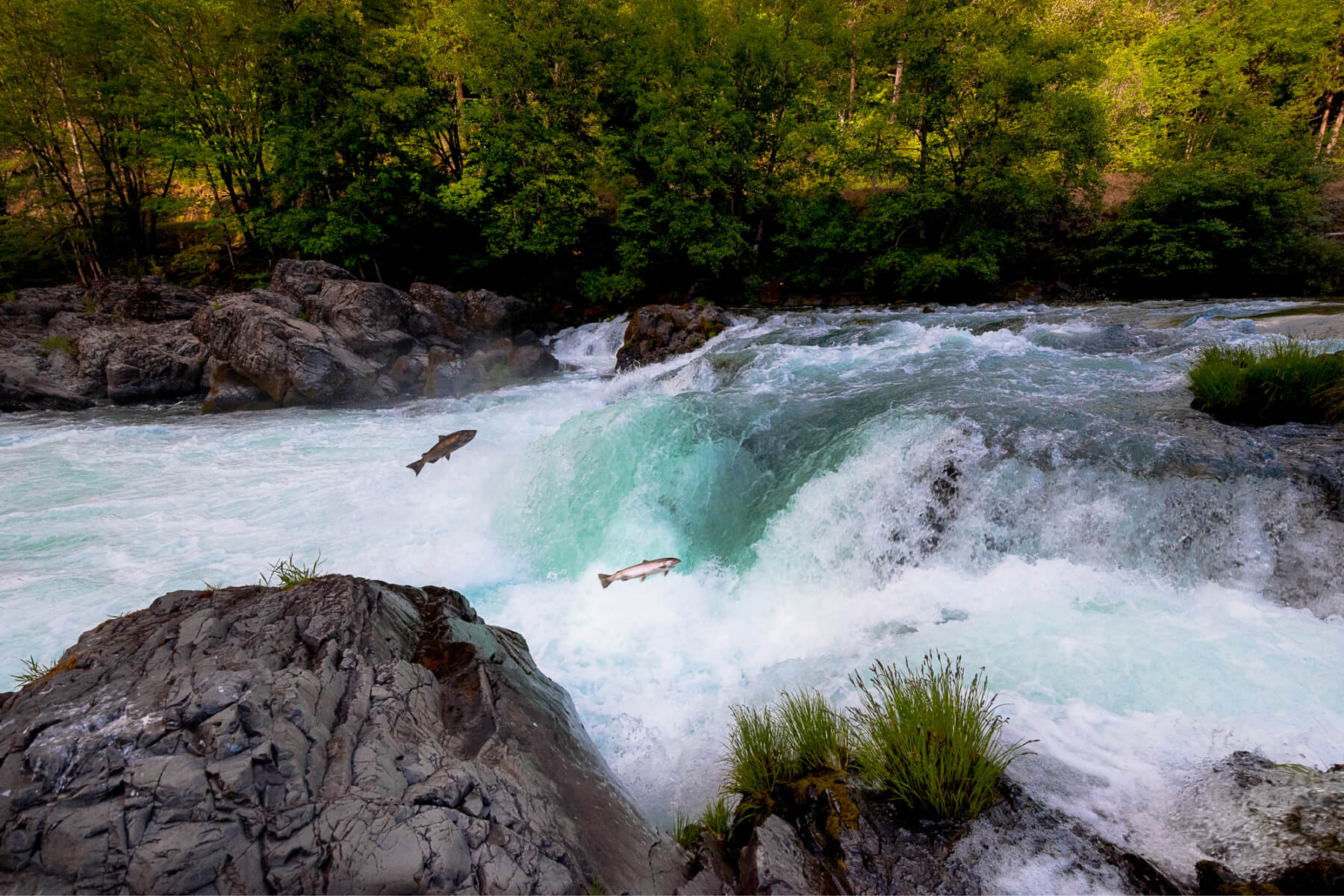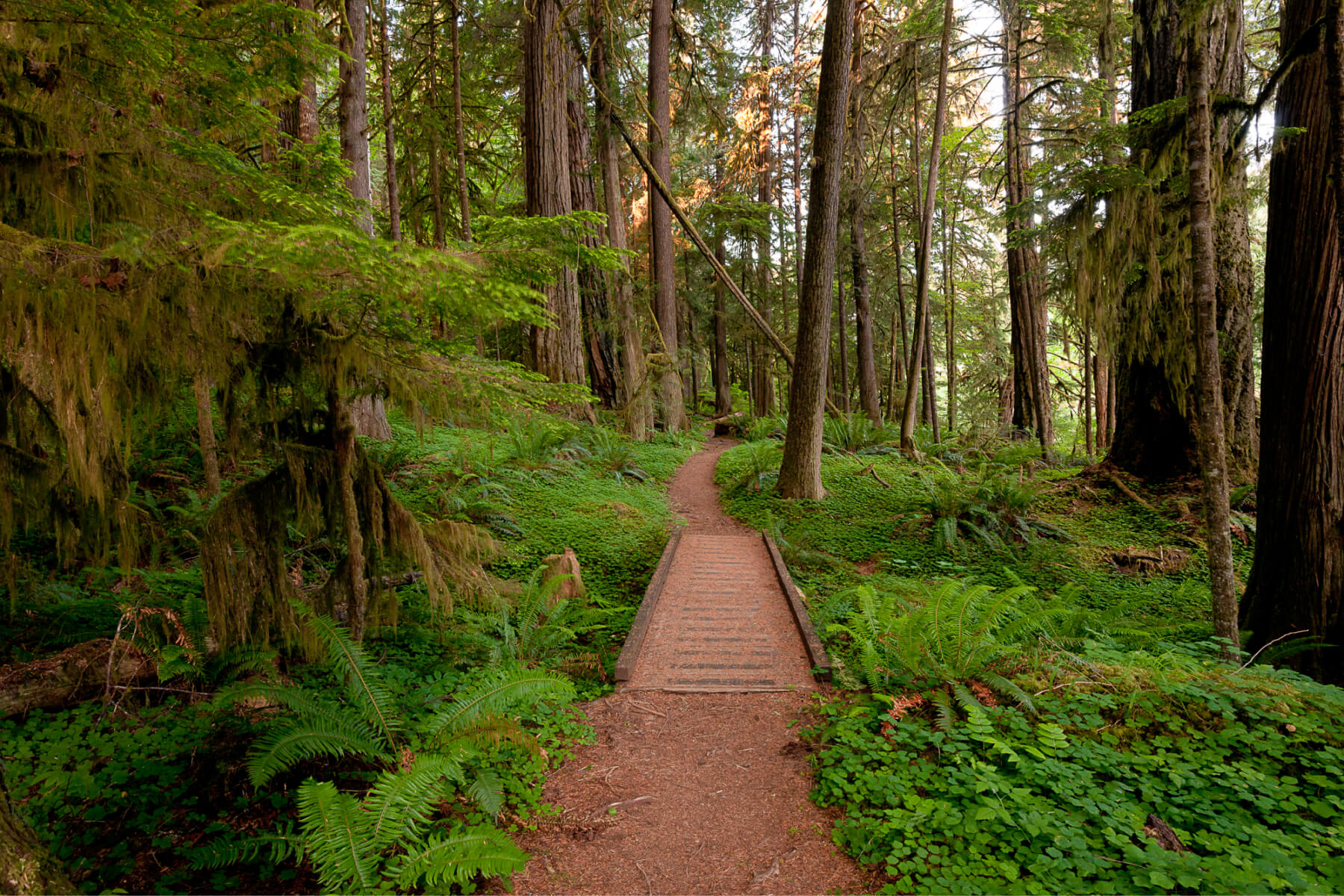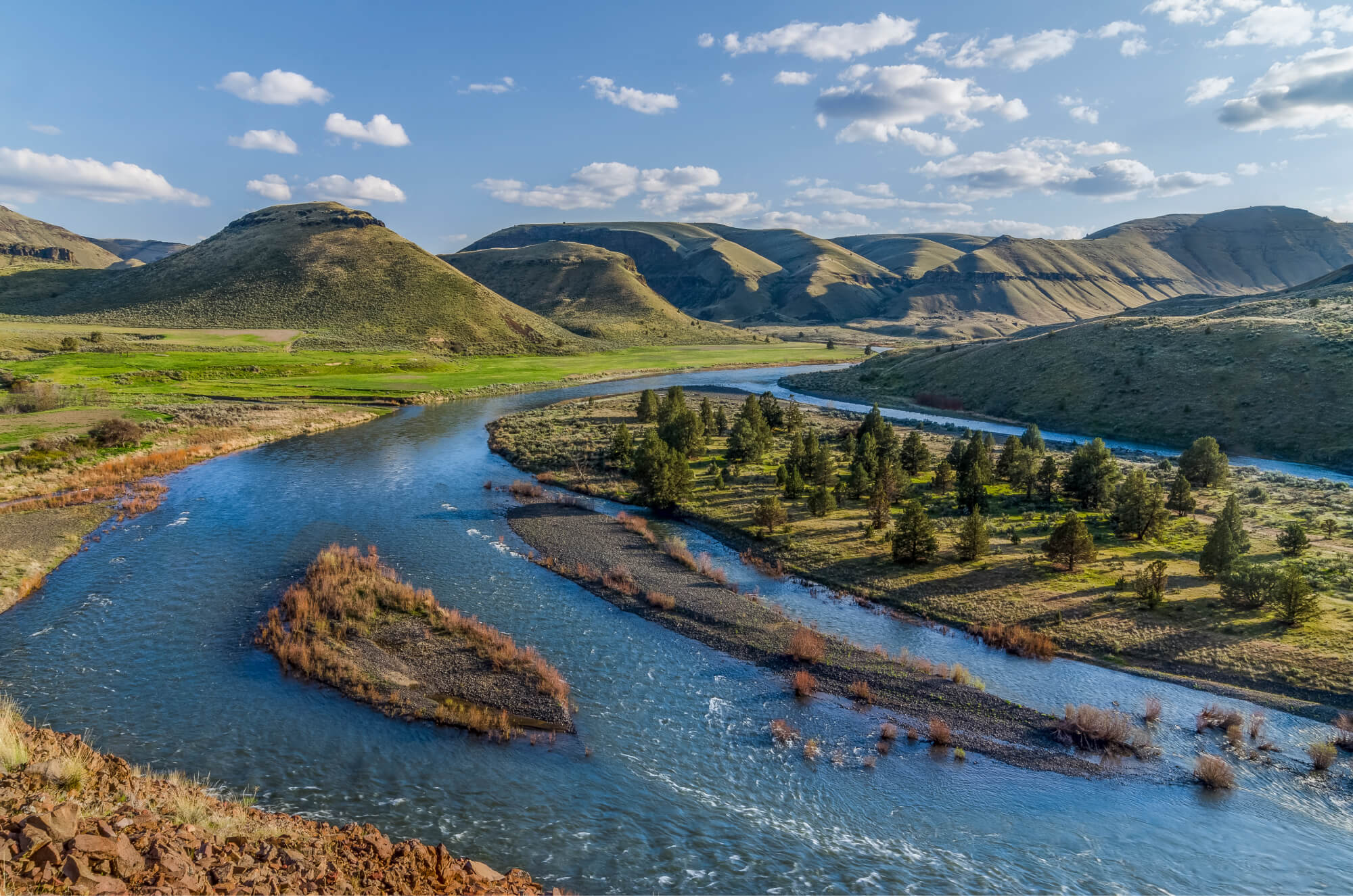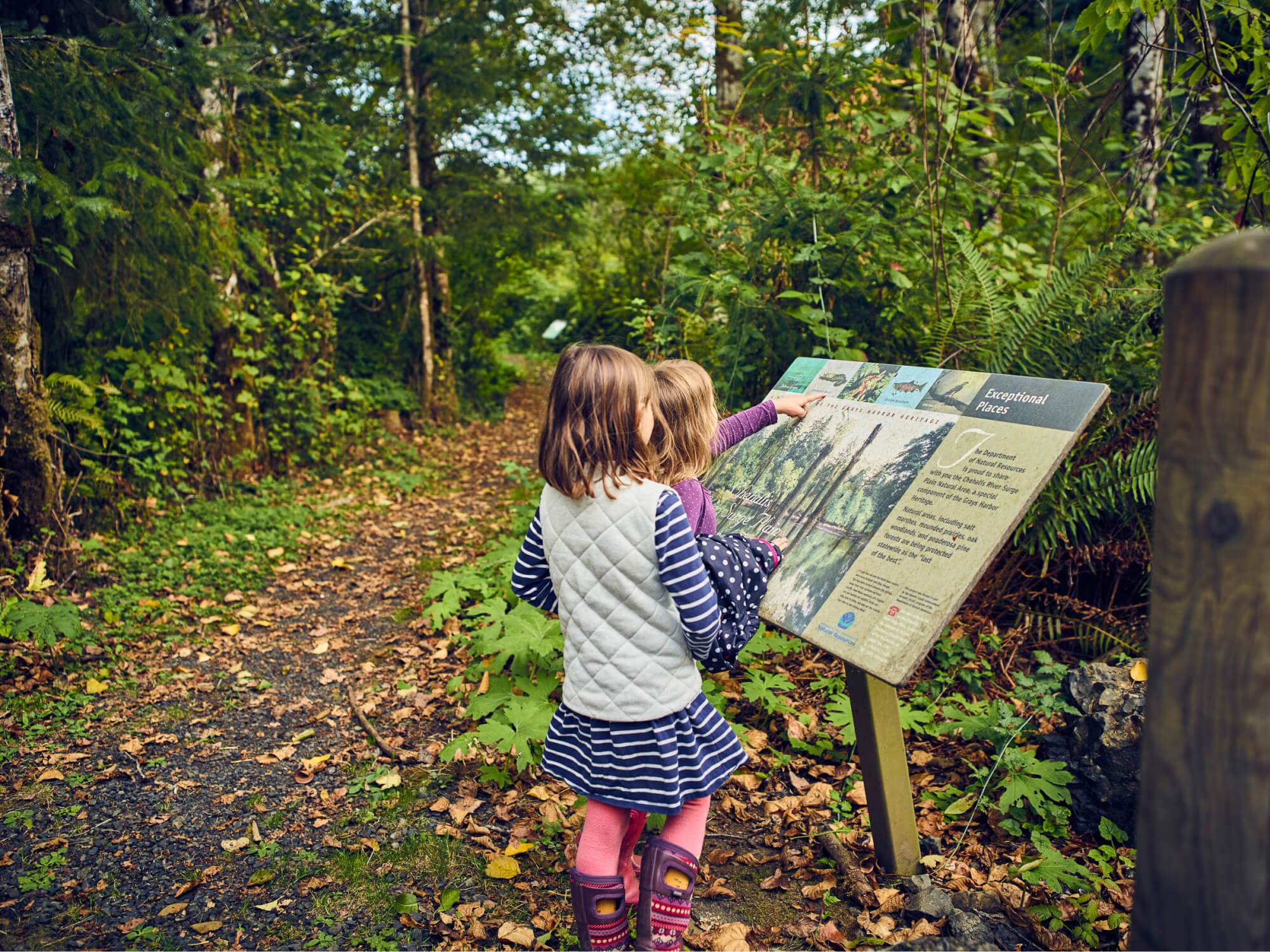A conservation focus on a rare Oregon salmon stronghold
Oregon’s revered North Umpqua River is one of the finest streams in the Pacific Northwest. It is one of only two Oregon rivers that flow from the Cascades through the Coast Range to the Pacific. All other coastal streams have their headwaters in the Coast Range. The North Umpqua is also one of the few designated Salmon Strongholds in Oregon, with healthy runs of spring Chinook, coho salmon and summer steelhead. It has good numbers of resident rainbow and cutthroat trout, and its water quality is outstanding. The river is also a recreational treasure, prized by fly anglers the world over. It is flanked by the spectacular 79-mile North Umpqua National Recreational Trail for most of its length and has 33 miles of designated fly-fishing-only water.
Western Rivers Conservancy has worked throughout the North Umpqua Wild and Scenic River corridor to purchase and permanently conserve riverlands of critical importance. To date, our efforts have preserved crucial habitat for imperiled fish and wildlife and ensured continued public access to important reaches of the national trail and to a coveted stretch of fly water.
Keeping the western end of the North Umpqua Trail open
Our first acquisition was the 211-acre Swiftwater Tract along nearly a mile of the North Umpqua, which we conveyed to the Bureau of Land Management for protection in spring 2017. The park controls the western end of the 79-mile North Umpqua National Recreation Trail, at the beginning of some of the most coveted fly fishing water in the west. When the county was forced to sell the park, WRC stepped in to buy and conserve it, ensuring this reach of a world-class hiking and fishing destination remains in public ownership.
Building on that effort, in summer 2023, we acquired and immediately conveyed to the BLM another 220 acres that include an additional mile of river frontage. The parcels lie within multiple protected areas, including the North Umpqua Wild and Scenic River corridor, the Rogue-Umpqua National Scenic Byway, the North Umpqua Special Recreation Management Area (SRMA), the North Umpqua Area of Critical Environmental Concern (ACEC), the North Umpqua National Recreation Trail and the Oregon State Scenic Waterway.
Setting the stage for forest recovery
There are several high quality gravel beds within the properties that provide spawning habitat, including a mile of designated Oregon Coast Coho Critical Habitat. Forests throughout the area are also home to wildlife like northern spotted owl (threatened), bald eagle, Roosevelt elk, black bear and river otter.
For people, these accomplishments provide crucial recreational access to fishing, wildlife viewing and hiking along stunning stretches of the North Umpqua. By conveying a total of 431 acres of riverlands to the BLM, we’re ensuring greater management continuity within the North Umpqua Wild and Scenic River corridor, helping to keep it healthy and accessible forever.
These conservation wins are also critical to forest recovery in the wake of devastating fires that swept through the area in 2020, including the properties we protected. When riverlands lose their timber value, they are often sold for development. But, together with the BLM, we’ve guaranteed that irreplaceable stands of North Umpqua forest will remain intact and on the path toward recovery.
For up to date access information please visit the Bureau of Land Management's Swiftwater Day-Use Area webpage.
Funding for the North Umpqua Project was made possible through generous contributions from multiple sources, including the David and Lucile Packard Foundation, The Meyer Memorial Trust, The Steamboaters, the Taylor and Alice Alexander Fund of The Oregon Community Foundation, the Martha Staley Marks Fund of The Oregon Community Foundation and with the generous support of many additional individuals, foundations and businesses.
This project was also made possible thanks to the Land and Water Conservation Fund, America's most important federal conservation and recreation program. LWCF has protected critical open space and public lands in nearly every state and every county in the U.S.

